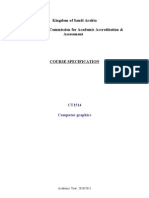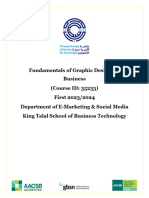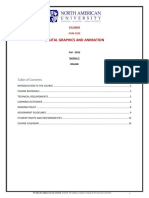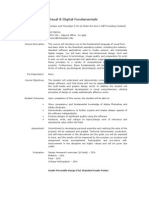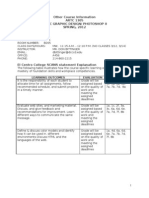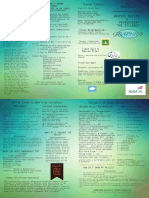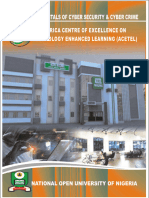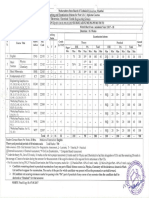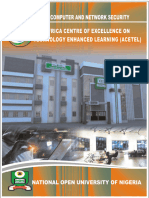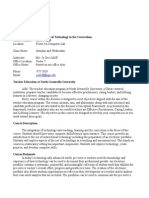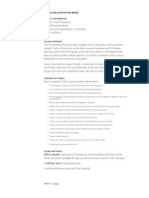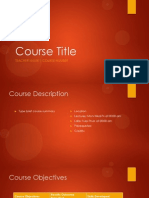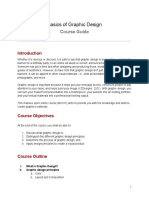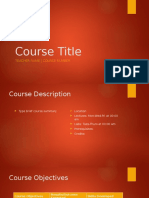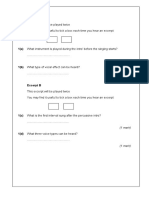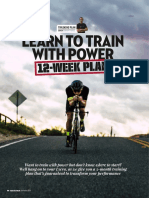0% found this document useful (0 votes)
154 views7 pagesIntro to Graphic Design Course
This 3-unit course introduces students to the history and evolution of graphic design. Over 18 weeks, students will learn fundamental design principles, develop skills in Photoshop and related programs, and apply their creative skills to design instructional graphics. The course covers topics like the basics of graphic design, working in Photoshop, using layers and blending modes, editing and combining images, and creating 3D objects and special effects. Assessments include presentations, quizzes, and creative projects.
Uploaded by
Echo greenCopyright
© © All Rights Reserved
We take content rights seriously. If you suspect this is your content, claim it here.
Available Formats
Download as DOCX, PDF, TXT or read online on Scribd
0% found this document useful (0 votes)
154 views7 pagesIntro to Graphic Design Course
This 3-unit course introduces students to the history and evolution of graphic design. Over 18 weeks, students will learn fundamental design principles, develop skills in Photoshop and related programs, and apply their creative skills to design instructional graphics. The course covers topics like the basics of graphic design, working in Photoshop, using layers and blending modes, editing and combining images, and creating 3D objects and special effects. Assessments include presentations, quizzes, and creative projects.
Uploaded by
Echo greenCopyright
© © All Rights Reserved
We take content rights seriously. If you suspect this is your content, claim it here.
Available Formats
Download as DOCX, PDF, TXT or read online on Scribd
/ 7
